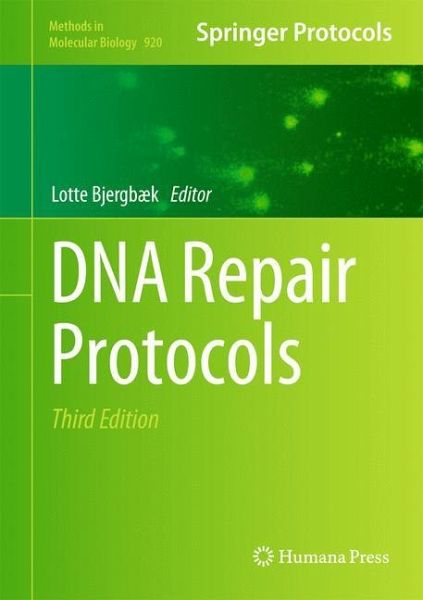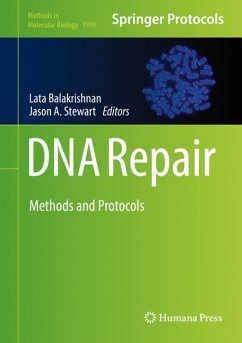
DNA Repair Protocols

PAYBACK Punkte
58 °P sammeln!
Current knowledge of the mechanisms that regulate DNA repair has grown significantly over the past years with technology advances such as RNA interference, advanced proteomics and microscopy as well as high throughput screens. The third edition of DNA Repair Protocols covers various aspects of the eukaryotic response to genomic insult including recent advanced protocols as well as standard techniques used in the field of DNA repair. Both mammalian and non-mammalian model organisms are covered in the book, and many of the techniques can be applied with only minor modifications to other systems ...
Current knowledge of the mechanisms that regulate DNA repair has grown significantly over the past years with technology advances such as RNA interference, advanced proteomics and microscopy as well as high throughput screens. The third edition of DNA Repair Protocols covers various aspects of the eukaryotic response to genomic insult including recent advanced protocols as well as standard techniques used in the field of DNA repair. Both mammalian and non-mammalian model organisms are covered in the book, and many of the techniques can be applied with only minor modifications to other systems than the one described. Written in the highly successful Methods in Molecular Biology? series format, the chapters include the kind of detailed description and implementation advice that is crucial for getting optimal results in the laboratory.
Thorough and intuitive, DNA Repair Protocols, Third Edition provides expert guidance for DNA repair, recombination, and replication.
Thorough and intuitive, DNA Repair Protocols, Third Edition provides expert guidance for DNA repair, recombination, and replication.














